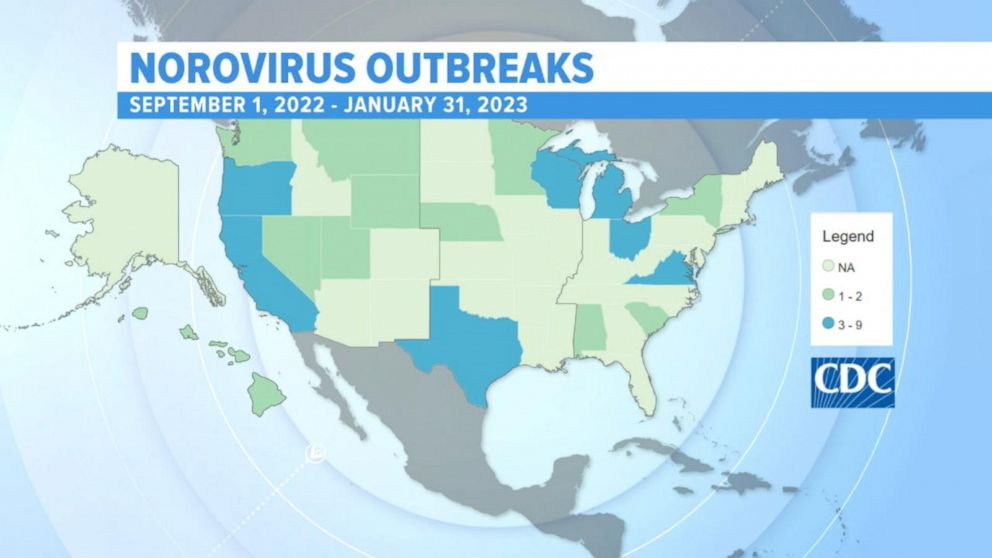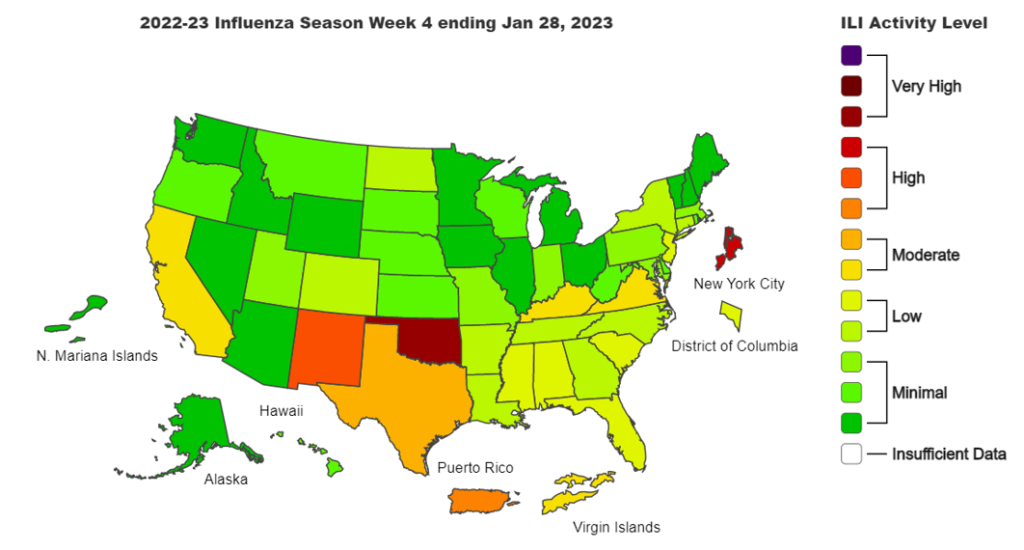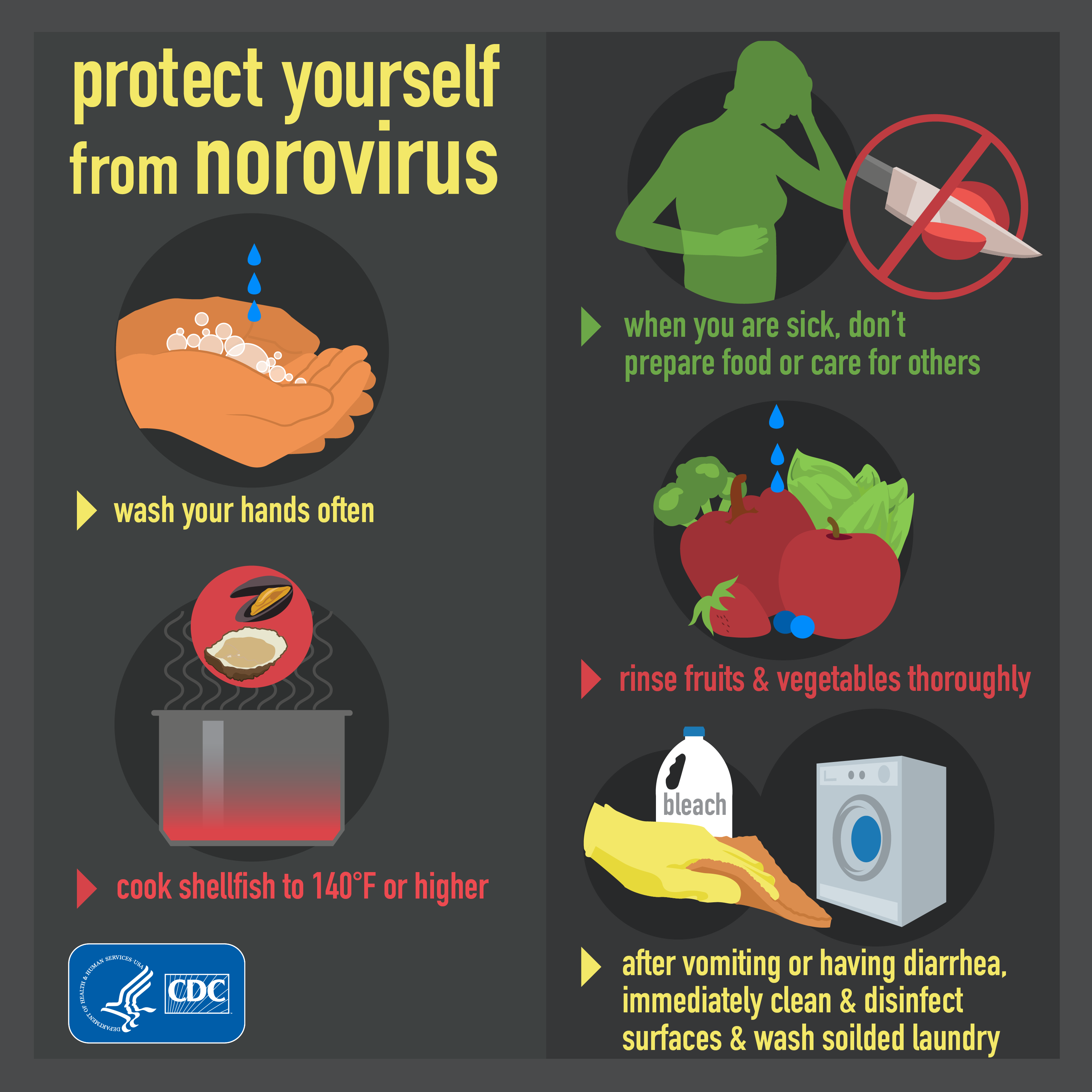Real-Time Norovirus Outbreak Map: Stay Informed In 2024
What is a norovirus 2024 outbreak map? A norovirus 2024 outbreak map is a visual representation of the spread of norovirus outbreaks in 2024. It can be used to track the virus's spread and identify areas that are at high risk for an outbreak.
Norovirus is a highly contagious virus that causes vomiting, diarrhea, and stomach cramps. It is spread through contact with infected people or contaminated food or water. Norovirus outbreaks are common in schools, hospitals, and other settings where people are in close contact.
A norovirus 2024 outbreak map can be a valuable tool for public health officials and individuals. It can help public health officials identify areas that are at high risk for an outbreak and take steps to prevent the spread of the virus. Individuals can use the map to avoid areas where there is a high risk of exposure to norovirus.
Norovirus is a major public health concern. It is estimated that norovirus causes 19 to 21 million illnesses and 570 to 800 deaths in the United States each year. A norovirus 2024 outbreak map can help to reduce the impact of norovirus by helping public health officials and individuals take steps to prevent the spread of the virus.
norovirus 2024 outbreak mapIntroduction
Norovirus is a highly contagious virus that causes vomiting, diarrhea, and stomach cramps. It is spread through contact with infected people or contaminated food or water. Norovirus outbreaks are common in schools, hospitals, and other settings where people are in close contact.Key Aspects
- A norovirus 2024 outbreak map is a visual representation of the spread of norovirus outbreaks in 2024.
- It can be used to track the virus's spread and identify areas that are at high risk for an outbreak.
- A norovirus 2024 outbreak map can be a valuable tool for public health officials and individuals.
Discussion
A norovirus 2024 outbreak map can help public health officials identify areas that are at high risk for an outbreak and take steps to prevent the spread of the virus. Individuals can use the map to avoid areas where there is a high risk of exposure to norovirus.
Norovirus is a major public health concern. It is estimated that norovirus causes 19 to 21 million illnesses and 570 to 800 deaths in the United States each year. A norovirus 2024 outbreak map can help to reduce the impact of norovirus by helping public health officials and individuals take steps to prevent the spread of the virus.
- P Diddy Reading List
- Nle Choppa Sophie Rain Song
- Children Of Elon Musk Names
- Kim Young Dae
- Matthew Hussey Wife Audrey Age
Information Table
| Feature | Description ||---|---|| Map type | A visual representation of the spread of norovirus outbreaks in 2024. || Data source | Data from the Centers for Disease Control and Prevention (CDC) and other public health agencies. || Update frequency | Updated weekly or as new data becomes available. || Purpose | To help public health officials and individuals track the spread of norovirus and identify areas that are at high risk for an outbreak. |norovirus 2024 outbreak map
A norovirus 2024 outbreak map is a visual representation of the spread of norovirus outbreaks in 2024. It can be used to track the virus's spread and identify areas that are at high risk for an outbreak.
- Geographic: Tracks the geographic spread of norovirus outbreaks.
- Temporal: Shows the timeline of norovirus outbreaks.
- Severity: Indicates the severity of norovirus outbreaks.
- Outbreak type: Classifies norovirus outbreaks by type, such as foodborne or waterborne.
- Control measures: Documents the control measures implemented to contain norovirus outbreaks.
- Risk factors: Identifies the risk factors associated with norovirus outbreaks.
These key aspects of a norovirus 2024 outbreak map provide a comprehensive overview of the virus's spread and impact. By tracking the geographic, temporal, and severity of norovirus outbreaks, public health officials can identify areas that are at high risk for an outbreak and take steps to prevent the virus's spread. The outbreak type, control measures, and risk factors associated with norovirus outbreaks can also inform public health policy and interventions.
Geographic
The geographic component of a norovirus 2024 outbreak map is crucial for understanding the spread of the virus and identifying areas at high risk. By tracking the geographic distribution of outbreaks, public health officials can identify patterns and trends in the virus's spread and allocate resources accordingly.
- Outbreak clusters: Norovirus outbreaks often occur in clusters, indicating areas where the virus is spreading rapidly. Identifying these clusters can help public health officials target their response efforts and prevent the virus from spreading to new areas.
- High-risk areas: Some areas are more at risk for norovirus outbreaks than others. These areas may have high population density, poor sanitation, or a lack of access to clean water. Identifying these high-risk areas can help public health officials implement preventive measures and educate the public about the risks of norovirus.
- Spread patterns: Tracking the geographic spread of norovirus outbreaks can help public health officials identify the patterns of the virus's spread. This information can be used to predict where the virus is likely to spread next and to take steps to prevent outbreaks in those areas.
- Resource allocation: The geographic information provided by a norovirus 2024 outbreak map can help public health officials allocate resources effectively. By identifying areas at high risk for outbreaks, public health officials can ensure that these areas have the resources they need to prevent and control outbreaks.
The geographic component of a norovirus 2024 outbreak map is an essential tool for public health officials. By tracking the geographic spread of the virus, public health officials can identify areas at high risk for outbreaks and take steps to prevent the virus from spreading to new areas.
Temporal
The temporal component of a norovirus 2024 outbreak map is crucial for understanding the spread of the virus and identifying areas at high risk. By tracking the timeline of norovirus outbreaks, public health officials can identify seasonal trends, patterns of recurrence, and the duration of outbreaks.
- Seasonal trends: Norovirus outbreaks are more common during certain times of the year, such as the winter months in temperate climates. Identifying these seasonal trends can help public health officials predict when outbreaks are most likely to occur and take steps to prevent them.
- Patterns of recurrence: Some areas experience norovirus outbreaks more frequently than others. Identifying these patterns of recurrence can help public health officials target their response efforts and develop long-term strategies to prevent outbreaks.
- Duration of outbreaks: Norovirus outbreaks can last for days or even weeks. Tracking the duration of outbreaks can help public health officials estimate the potential impact of an outbreak and plan for the resources that will be needed to control it.
- Outbreak trends: By tracking the timeline of norovirus outbreaks, public health officials can identify trends in the virus's spread. This information can be used to predict where the virus is likely to spread next and to take steps to prevent outbreaks in those areas.
The temporal component of a norovirus 2024 outbreak map is an essential tool for public health officials. By tracking the timeline of norovirus outbreaks, public health officials can identify seasonal trends, patterns of recurrence, and the duration of outbreaks. This information can be used to predict where the virus is likely to spread next and to take steps to prevent outbreaks in those areas.
Severity
The severity of norovirus outbreaks can vary significantly. Some outbreaks may be mild, causing only a few cases of vomiting and diarrhea. Other outbreaks may be more severe, causing widespread illness and even death. The severity of an outbreak depends on a number of factors, including the strain of norovirus, the size of the population exposed to the virus, and the effectiveness of public health interventions.
- Role of norovirus strain: Different strains of norovirus can vary in their severity. Some strains are more likely to cause severe illness than others. The GII.4 strain, for example, is known to be particularly virulent and has been associated with large outbreaks of severe norovirus illness.
- Size of the population exposed: The size of the population exposed to norovirus can also affect the severity of an outbreak. Outbreaks in large populations are more likely to be severe than outbreaks in small populations. This is because there are more opportunities for the virus to spread and cause illness in a large population.
- Effectiveness of public health interventions: The effectiveness of public health interventions can also affect the severity of a norovirus outbreak. Public health interventions, such as handwashing and isolation of infected individuals, can help to prevent the spread of the virus and reduce the severity of an outbreak.
The severity of norovirus outbreaks is an important consideration for public health officials. By understanding the factors that contribute to the severity of norovirus outbreaks, public health officials can develop more effective strategies to prevent and control outbreaks.
Outbreak type
Classifying norovirus outbreaks by type is crucial for understanding the causes and patterns of spread, and for developing effective prevention and control strategies. The type of outbreak can influence the severity of illness, the mode of transmission, and the populations most at risk.
Foodborne norovirus outbreaks are commonly associated with contaminated food, such as shellfish, salads, and produce. Waterborne norovirus outbreaks are linked to contaminated water sources, such as drinking water, recreational water, and sewage. Identifying the outbreak type can help public health officials trace the source of the contamination and implement targeted control measures.
For instance, during a foodborne norovirus outbreak in 2019, rapid identification of the contaminated food item (oysters) through outbreak investigation enabled timely intervention, including product recalls and consumer advisories. This action helped contain the outbreak and prevent further spread.
Understanding the outbreak type is also essential for developing tailored prevention strategies. For example, foodborne outbreaks can be addressed through improved food handling practices, while waterborne outbreaks may require water treatment and sanitation interventions.
Incorporating outbreak type information into a norovirus 2024 outbreak map can provide valuable insights for public health surveillance and response. By overlaying outbreak type data onto geographic and temporal information, public health officials can identify areas with higher risks of specific types of outbreaks and allocate resources accordingly.
Overall, understanding the type of norovirus outbreak is crucial for effective prevention and control. Classifying outbreaks by type allows public health officials to identify the source of contamination, implement targeted interventions, and develop tailored prevention strategies.
Control Measures
Control measures play a critical role in containing norovirus outbreaks and are an essential component of a norovirus 2024 outbreak map. Understanding the control measures implemented during past outbreaks provides valuable insights for developing effective prevention and response strategies.
Incorporating control measures into a norovirus 2024 outbreak map allows public health officials to identify areas where specific control measures have been successful in controlling outbreaks. This information can help guide decision-making for future outbreaks and allocate resources more efficiently.
For example, during a norovirus outbreak in a school setting, implementing control measures such as immediate isolation of infected individuals, thorough cleaning and disinfection of contaminated areas, and exclusion of ill individuals from school activities helped to contain the outbreak and prevent further spread.
The norovirus 2024 outbreak map can serve as a valuable tool for evaluating the effectiveness of different control measures and identifying best practices for outbreak management. By analyzing the control measures implemented during past outbreaks, public health officials can gain insights into which measures are most effective in different settings and under varying circumstances.
Overall, the connection between control measures and the norovirus 2024 outbreak map is crucial for enhancing outbreak preparedness and response efforts. By documenting and analyzing the control measures implemented during past outbreaks, public health officials can develop more targeted and effective strategies to prevent and control future norovirus outbreaks.
Risk factors
Understanding the risk factors associated with norovirus outbreaks is crucial for developing effective prevention and control strategies. These risk factors can influence the likelihood of an outbreak occurring, the severity of the outbreak, and the population groups most at risk.
- Contact with infected individuals: Close contact with an infected person is a major risk factor for norovirus infection. The virus is spread through contact with infected people's vomit or stool, or by touching surfaces or objects contaminated with the virus.
In the context of a norovirus 2024 outbreak map, identifying areas with high levels of contact between individuals, such as schools, hospitals, or crowded public spaces, can help public health officials prioritize surveillance and prevention efforts.
Consumption of contaminated food or water: Norovirus can also be transmitted through contaminated food or water. Foodborne outbreaks are often associated with shellfish, salads, and produce, while waterborne outbreaks are linked to contaminated drinking water or recreational water.A norovirus 2024 outbreak map can be used to identify areas with potential sources of contaminated food or water, allowing public health officials to implement targeted interventions, such as monitoring food safety practices or issuing water advisories.
Poor sanitation and hygiene: Poor sanitation and hygiene practices can contribute to the spread of norovirus. Inadequate handwashing, contaminated surfaces, and improper disposal of infected individuals' waste can increase the risk of infection.A norovirus 2024 outbreak map can help identify areas with limited access to clean water, sanitation facilities, or hygiene education, enabling public health officials to focus resources on improving these conditions and reducing the risk of outbreaks.
Weakened immune system: Individuals with weakened immune systems are more susceptible to norovirus infection and may experience more severe symptoms. This includes young children, the elderly, and people with chronic health conditions.By overlaying a norovirus 2024 outbreak map with data on vulnerable populations, public health officials can prioritize outreach and education efforts to these groups, ensuring they have the knowledge and resources to protect themselves from infection.
In conclusion, understanding the risk factors associated with norovirus outbreaks is essential for the effective prevention and control of outbreaks. By incorporating risk factor information into a norovirus 2024 outbreak map, public health officials can identify areas at high risk for outbreaks and target interventions to reduce the likelihood of outbreaks occurring and mitigate their impact.
FAQs on Norovirus 2024 Outbreak Map
The norovirus 2024 outbreak map is a valuable tool for public health officials and individuals to track, prevent, and control norovirus outbreaks. Here are some frequently asked questions about the map and its significance:
Question 1: What is the purpose of the norovirus 2024 outbreak map?
The norovirus 2024 outbreak map provides a visual representation of the spread of norovirus outbreaks in 2024. It helps public health officials identify areas at high risk for an outbreak, track the geographic and temporal patterns of the virus's spread, and assess the severity and impact of outbreaks.
Question 2: How can the norovirus 2024 outbreak map benefit individuals?
Individuals can use the norovirus 2024 outbreak map to make informed decisions about their health and safety. By being aware of areas with high levels of norovirus activity, individuals can take precautions to avoid exposure to the virus, such as avoiding contact with infected individuals, practicing good hygiene, and consuming safe food and water.
Summary: The norovirus 2024 outbreak map is an important resource for public health officials and individuals alike. It provides valuable information about the spread and impact of norovirus outbreaks, enabling effective prevention and control measures to safeguard public health.
Conclusion on Norovirus 2024 Outbreak Map
The norovirus 2024 outbreak map is a valuable tool for public health officials and individuals to track, prevent, and control norovirus outbreaks. By providing a visual representation of the spread of the virus, the map helps identify areas at high risk for an outbreak, monitor the geographic and temporal patterns of the virus's spread, and assess the severity and impact of outbreaks.
This information is critical for public health officials to allocate resources effectively, implement targeted prevention and control measures, and communicate risks to the public. Individuals can use the map to make informed decisions about their health and safety, such as avoiding areas with high levels of norovirus activity and practicing good hygiene.
The norovirus 2024 outbreak map is a valuable resource that can help reduce the impact of norovirus outbreaks and protect public health. As we continue to face the challenges of emerging infectious diseases, such maps will become increasingly important for informing decision-making and safeguarding the health of our communities.
- Mike Lindell Net Worth 2024
- Nle Choppa Sophie Rain Song
- Zahn Mcclarnon Partner
- Zoe Perry Kids
- Jamie Dimon Wife Judith Kent

Video Norovirus cases spread across the country ABC News

Norovirus 2024 Outbreak Map Lesly Novelia

Norovirus Activity Scott County, Iowa